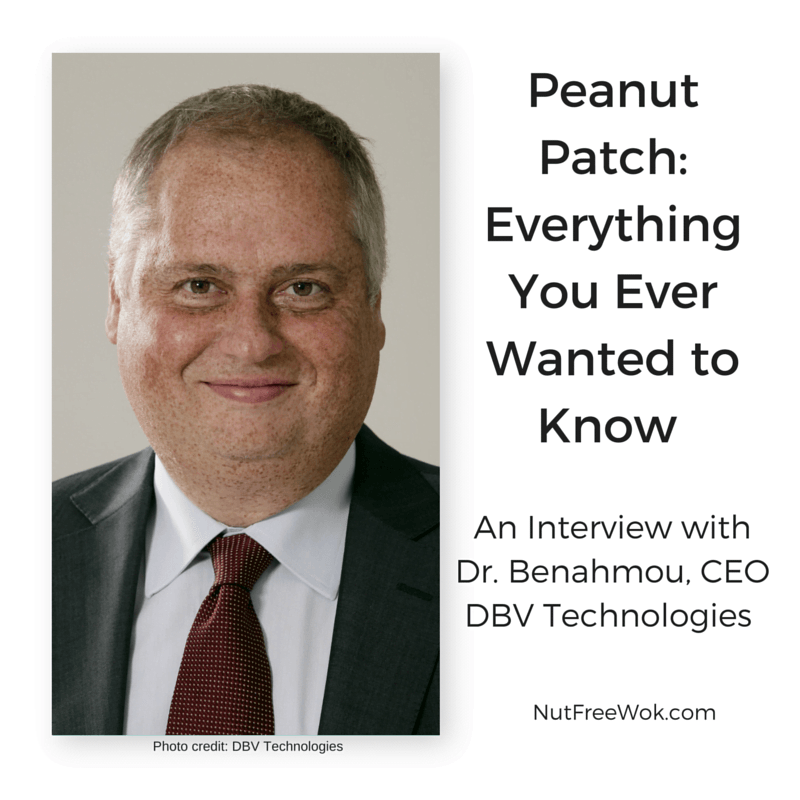
Peanut Patch: Everything You Ever Wanted to Know
I recently had the privilege and the pleasure to interview Dr. Pierre-Henri Benhamou, the CEO of DBV Technologies, the company that is currently working on the development of Epicutaneous Immunotherapy (EPIT®) such as the Viaskin Peanut®, also known as a Peanut Patch. This interview has almost everything you ever wanted to know about Viaskin that is available to share.
You can just imagine the big “Yesssss!” that came from this fan-girl when I was invited to interview Dr. Benhamou and Ms. Nathalie Donne from DBV Technologies, the peanut patch company, with a “break through” potential treatment for peanut allergies that is currently in various phases of clinical trial research. After the initial excitement subsided, I had to think about what will we talk about when I mostly would like to say “Thank you for changing my son’s life!”
I had already shared my thought process about enrolling in a clinical trial and also our family’s perspective and progress while nearing the end of the VIPES-OLFUS trial. My son’s final DPBCFC results were the same as the previous year and he completed his enrollment in the trial. He continues to carry epi and be careful about what he eats, and we know that he’s protected from traces of peanut around him or in what he eats.
I’m not a medical professional and not qualified to analyze or evaluate the research. But I am a mom and I have a lot of mom questions that I’ve always wanted to ask Dr. Benhamou and I hope you will find the answers informative. I often think about why a successful doctor would change the course of his career to start a company to find a treatment for food allergies? How did he come up with the idea of a “peanut patch”? And what do we have to look forward to in the next few years? Read our interview to find out the answers to this food allergy mom’s frequently asked questions.
Please note that I transcribed our interview and edited for brevity and clarity. This interview also took place after my son completed his enrollment in the peanut patch trial. This interview is not sponsored but I choose to share this interview because it’s a wonderful opportunity to have Dr. Benhamou answer some of the questions we all have. EPIT is still currently under investigation in clinical trials and FDA approval is still pending. If you have additional interest in learning more about DBV Technologies and EPIT, please refer to DBV Tehcnologies’ website and your medical care team.
Hello Dr. Benhamou and Ms. Donne, thank you so much for talking with me today. We are so excited about your ongoing research about the peanut patch. Please tell us about the treatment that DBV Technologies is developing.
Dr. PHB: We have developed a completely new direct approach to treat a peanut allergy that is safe. The Viaskin Peanut Patch is our first application and we also have Viaskin Milk in Phase II and we are preparing a treatment for egg allergy also.
Can you tell us more specifically what happens when Viaskin Peanut is applied? (asked via email post-interview)
ND: The Viaskin Peanut patch contains a small amount of peanut and the patch forms a condensation chamber on the skin, which creates an hyperhydration of the skin and an accumulation of water solubilizes the allergen. Due to this condensation chamber, the epidermis becomes more permeable allowing passage of the allergen into the epidermis and allows the Langerhans cells in the skin to absorb the peanut protein and to migrate to the lymph node in order to modulate the immune system.
What was your inspiration for finding a treatment for peanut and other food allergies?
Dr. PHB: With pleasure, we started DBV Technologies in 2002 and before that, I spent a large part of my career as a pediatric gastroenterologist. In my experience, I managed a lot of young patients with food allergies. I saw many babies and young children with cow’s milk protein allergy (CMPA) because milk provokes a lot of gastric reactions in the gastrointestinal region. Many of them were diagnosed with eosinophilic esophagitis (EoE) due to CMPA and it was very difficult because there was no treatment available at all. At the time, the first experiments in oral immunotherapy (OIT) seemed too difficult for pediatricians to consider because OIT produced many reactions.
We were interested in the patch because we had some news concerning immunotherapy on the skin, which would avoid contact of the allergen in the esophagus as this allergen is delivered through the skin, targeting specific immune cells of the skin that capture the allergen. We did some research and it was very interesting see that with the patch, we could use the skin for immunotherapy without the risk of anaphylactic reaction, a generalized reaction of the patients. Anaphylaxis is the reason why we are concerned regarding a much better and safer treatment for babies and young children.
Please tell us how did you and your researchers discover Epicutaneous Immunotherapy and the role of the Langerhans cells?
Dr. PHB: When we started DBV Technologies, there were some first reports concerning the Atopy Patch-Test (APT) used for diagnostic purposes. It’s a patch we put on the skin with some cow’s milk. This patch test can provoke some reaction on the skin and by using this patch we can determine whether a baby is allergic to cow’s milk. We started to study this skin reaction and saw there was a very interesting, distinct reaction on the skin.
By using the patch, we are able to activate cells at the surface of the skin and these cells are the Langerhans cells. The Langerhans cells are able take some proteins at the surface through the skin and use them to be able to activate the immune system. There is no risk of anaphylaxis because the protein never enters the bloodstream.
This kind of treatment is important. The profile of the immune response one can have seems really interesting and we have some results showing that the therapy can give long-term immunity to the patients. The research is very promising and we can apply it in other fields using this patch. For example, we have a collaboration with Mount Sinai concerning Crohn’s disease.
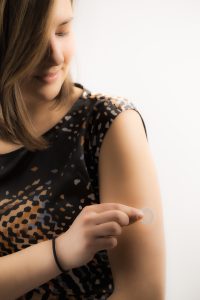
Describe for us where you are at with the peanut patch research.
Dr. PHB: We have findings and results from the different studies. We had the first year results of the peanut patch Phase IIb study one year ago. A couple of months ago we reached the 2nd year of the study and it shows a very strong response on the biological point of view and with improvement in the challenge test.
It’s been shared that the length of treatment takes about 3 years, does the length of treatment vary depending on the patient’s response to the patch or on their desire to be safe from small amounts of peanut or to be able to eat freely?
Dr. PHB:The treatment can be a long time, it can be three years. We have some patients who can be desensitized after 1 year. And it will probably be necessary that some patients will need to continue a bit. We need additional research before we can make further conclusions.
How will doctors determine whether the patch is working for the patients? How will the patient and doctor determine that treatment is no longer necessary?
Dr. PHB: We think that for pediatricians and allergists, it would be easier for the practitioner to follow the patient’s progress by using additional tests, such as specific IgE for peanuts. And we are also working on a new test to help the practitioner to follow the patient in order to monitor according to their treatment goals and how long they want to be treated.
How will patients maintain their desensitization upon completion of their treatment?
Dr. PHB: This is a very good point of course. We have some preliminary results and we need some time to see how patients are able to maintain their immunity after the end of treatment.
What we want to achieve is to decrease the risk in case of an accidental exposure to the peanut. It’s possible the patient will able to have a completely free diet and others will need to be continue to be cautious without the risk of major reaction. We want to increase the threshold of a reaction.
The first step is to increase the threshold and the second step would probably be to eat some traces in the diet. After a while the allergist will probably be able to give the patients guidance depending on the biological response and challenge tests.
It’s very exciting to see the promising results that some of the children in the VIPES-OLFUS peanut patch study have experienced. When will you begin studies with a higher dose patch (500 mcg) for older children and adults?
Dr. PHB: We made the decision to give complete priority to develop the Viaskin Peanut patch for the young children. And it is also our goal to further our development specifically for adolescents and adults. We have to optimize the patch because the results in Phase IIb were not as good for adults and adolescents.
We needed to improve the peanut patch for them and one way is by increasing the dose. We have a group of patients in the milk study that are treated with a 500 mcg milk patch and we will try the 500 mcg peanut patch in adults and adolescents, but nothing is definite at the moment.
We would consider an alternative to increasing the amount of allergenic protein on the patch. The size of the patch can be modified in order to increase the numbers of Langerhans cells that are activated to pick up the protein. This is something we are working on and we will propose to the authorities to treat the adolescents and adults as soon as we can.
And, concerning the 500 mcg peanut patch for adults and adolescents, this dose was validated during the Phase Ib. We tested the 500 mcg Viaskin Peanut dose during the safety trial.
Do you think that the Viaskin will be an only allergen specific treatment? Have patients trialing the Viaskin Peanut or Viaskin Milk outgrown other allergens? What can you tell us about the bystander effect of the patch?
Dr. PHB: What we are developing is not only a treatment for peanut allergy but a platform. And the new method can be used in various applications. We have projects on food allergies as the core of what we are doing. In food allergies we have peanut, milk and we are preparing the egg patch for egg allergy. But we have also a program on house dust mite for the prevention of dust mite allergy in children.
Perhaps you heard about the paper we have concerning the bystander effect. It shows that if you treat the allergy with specific immunotherapy, you could have a very positive effect on other allergies. So it’s something interesting because it will allow us to contemplate preventative treatment.
We are collaborating with Dr. Hugh Sampson, at Mount Sinai Hospital. He recently join us as the Chief Scientific Officer of the company. We are interested in the prevention of food allergies. We are working on ways to use the patch very early on in life in order to prevent food allergies in pediatric patients.
When do you project that the Viaskin Peanut will go to market, are you still on track for 2018?
Dr. PHB: We are completely on track. We have started the recruitment of our Phase III clinical study in early December 2015. We plan to complete the treatment and we need 1 year to complete the findings of the study and to file in 2018 and then wait for the registration.
Sometimes people may discover during oral immunotherapy (OIT) that they have developed eosinophilic esophagitis (EoE). Yet in contrast there is a milk patch study (SMILEE) for pediatric patients with CMPA and eosinophilic esophagitis. Is it possible that the peanut patch would also effective for those at risk of EoE and will the peanut patch treatment will be protective of EoE?
Dr. PHB: Of course you know that EoE is a very worrisome condition. I used to have a lot of patients with EoE during my career as a pediatric gastroenterologist. And it’s very painful and I have concerns regarding this disease. One of them is that it can be provoked by the contact of the esophageal mucosa and the allergen, in children it’s mainly cow’s milk protein. We see this sometimes in many of the OIT trials and with the patch we are not expecting any EoE because there is no contact of the mucosa with with the protein. We have very interesting proof of concept study concerning EoE and we will see if the patch can treat EoE.
Do you have anything else you would like to tell us about DBV Technologies and your research on the Viaskin products?
Dr. PHB: I would like to tell you that we appreciate the work you are doing and we know that this disease needs to be treated. It’s a very exciting time for us and we are grateful to have a breakthrough treatment, which is a big achievement. All the children and all the parents are really suffering from food allergies and managing food allergies can be something that is really cumbersome in their daily life. Our company is founded by pediatricians who see the impact food allergies has on patients’ and their families’ quality of life. It’s important that everyone here is aware of this dimension of your daily life in order to live a normal life, and one without fear.
Thank you so much Dr. Benhamou and the entire DBV Technologies team for your time to talk with me and to answer some of my questions about your ongoing research. You’ve been working on creating a safer treatment for patients with food allergies even before my son was born. I appreciate the great compassion that you and your company have for patients with food allergies and their families. I know that the Viaskin research means a lot to many families who are anxious to have a safer and freer life from food allergies. I know that our family’s quality of life has dramatically improved and I constantly have “pinch me, is this a dream” moments all the time. Many thanks also for collaborating with Dr. Kari Nadeau at Stanford who gave my son a chance at what’s turned out to be a life-changing experience for our entire family. Best wishes to you and your team as you present your research at AAAAI and eventually to the FDA for regulatory approval.
OK, Nut Free Wok readers, that’s pretty fabulous, wouldn’t you agree? It is my hope that this interview contains helpful information for you and gives you hope for a safe and easy desensitization treatment for peanuts, milk, and egg in the near future. It’s exciting that the EPIT platform has potential to treat other gut related conditions such as EoE and Crohn’s disease. I am personally interested in learning more about the bystander effect because I cannot help but wonder if that’s related to my son outgrew his allergies to shellfish and some tree nuts. I will update you if I learn more.
In the meantime, you might be interested to know that on Sunday, March 6, DBV Technologies will host a Symposium, “Epicutaneous Immunotherapy – A Novel Pathway for The Treatment of Food Allergies” from 6:30 – 8:30 PM. The Symposium will be broadcasted live and archived online.
Please help me out!
The best way to see every post or recipe is to subscribe to Nut Free Wok’s email subscription (be sure to respond to the confirmation email). You will to be notified by email next time I publish another post or recipe and I won’t send you spam or share you email with anyone.
If you enjoyed this post, please use the social media buttons below to share with others. I am on Facebook, Twitter, Pinterest, and Instagram as @nutfreewok and it’s great to chat and interact on social media too.
Disclaimer:
I have a pet peeve about non-qualified individuals giving medical advice which is why I will tell you again that I’m not a medical professional and I’m not sharing medical advice. If you have specific questions, please consult with your doctor, such as a board certified allergist. This post is not sponsored, all opinions are my own and based on our family’s experience with the patch. It’s important to me to be as accurate as I possibly can with the information that I have as of this writing but please understand that the research is on-going and pending FDA approval.
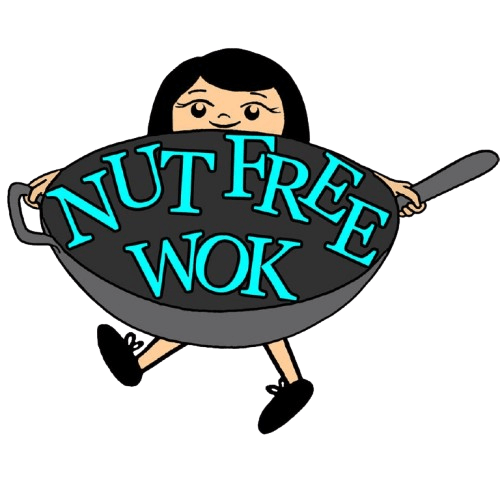
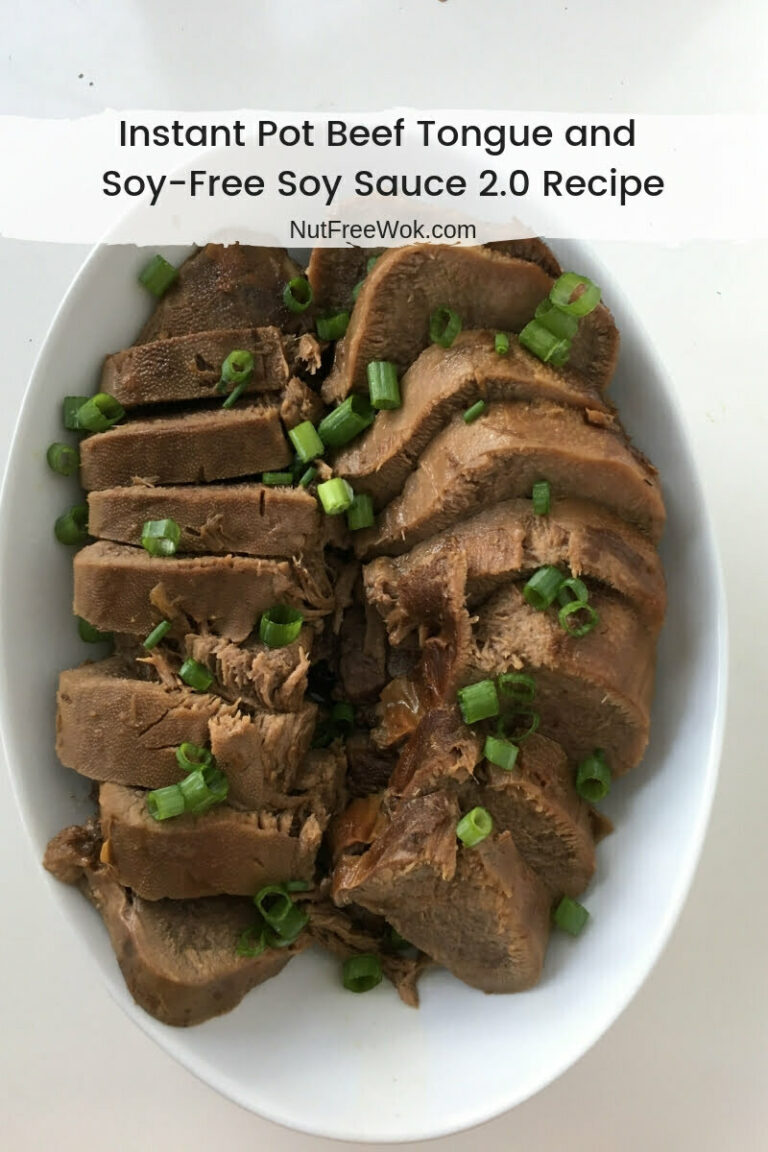
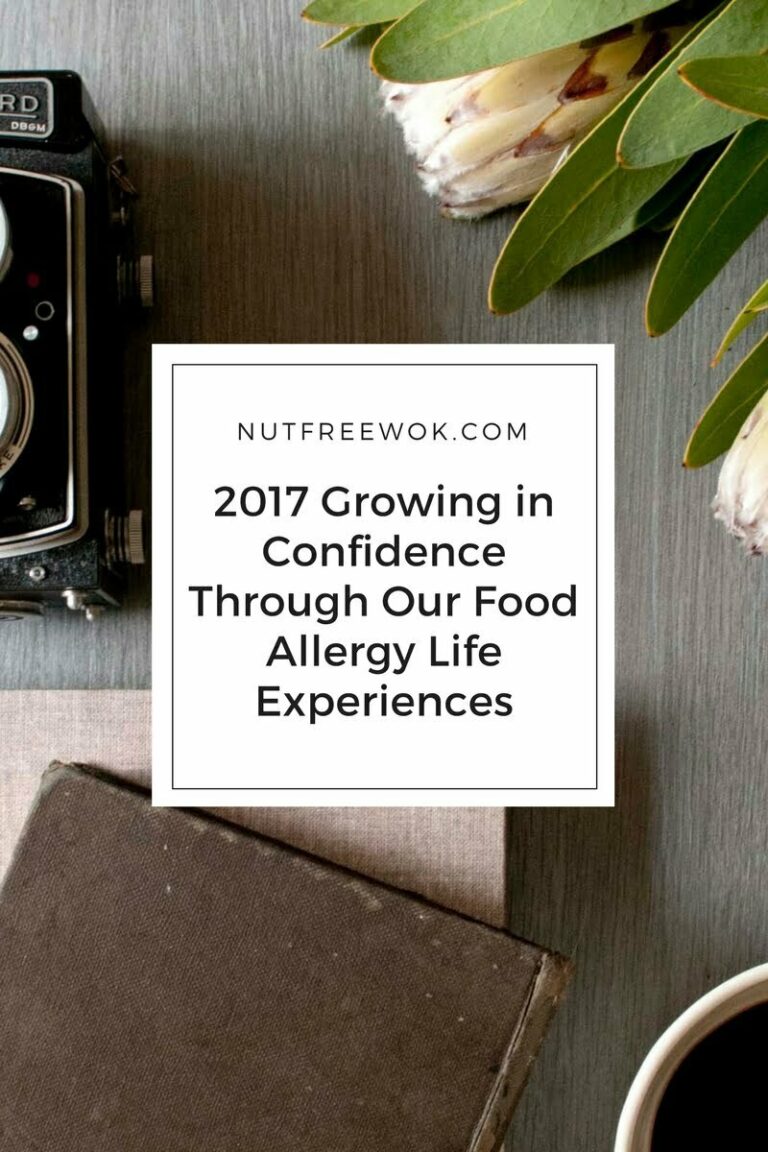

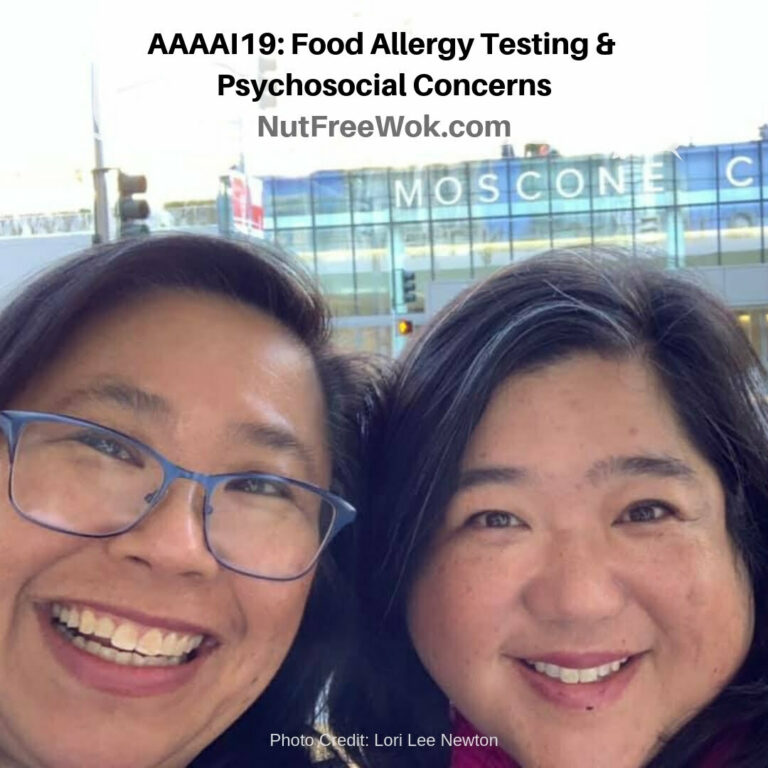
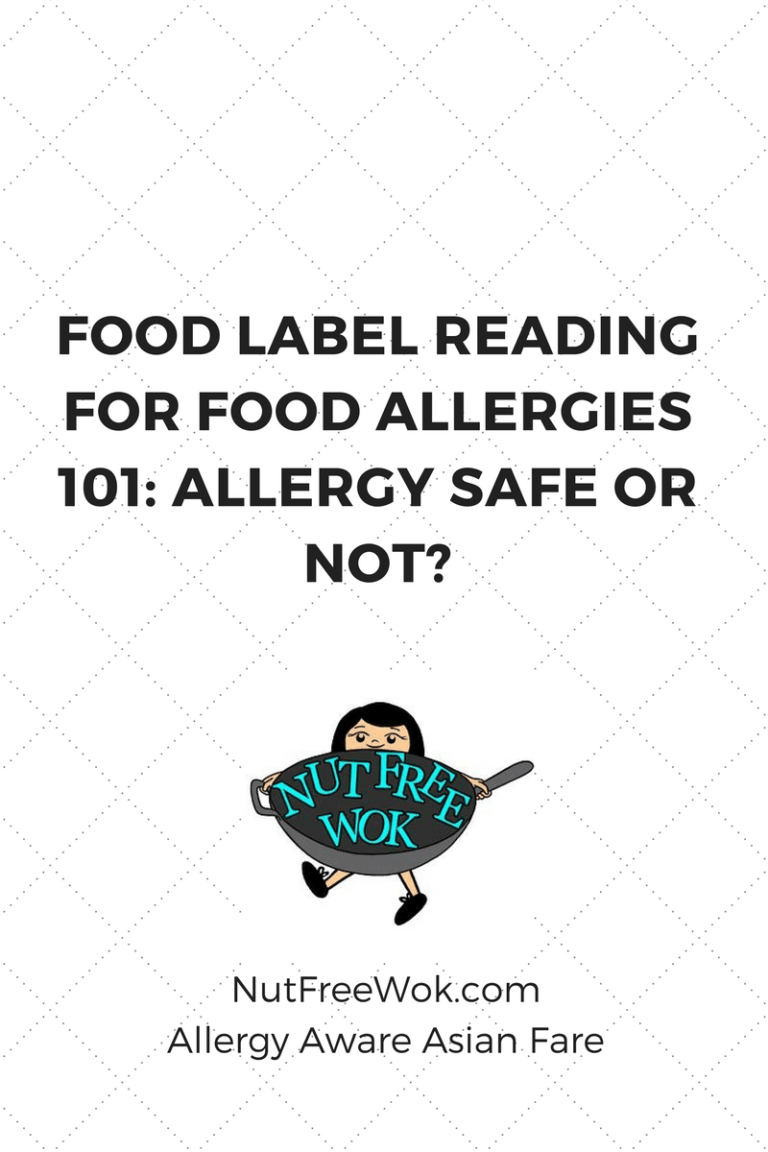
LOVE 🙂
Me too! 😉
Thank you for this informative interview. Is the 500 mg version scheduled to be out in 2018 or just the 250 mg version. In other words, will the 2018 date only be for ages 4-11?
You’re welcome, Penny. I think we just have to wait and see about where they are at in their research by then regarding treatment.
Sharon, thanks so much for this in-depth article. I really appreciate it. Thanks also for participating in the trial and helping to be a part of (hopefully) bringing this treatment to the food allergy community.
This is really interesting and informative! Thanks for posting this, I learned a lot!
LOVE LOVE LOVE what he says about the milk patch and EoE!!!! Thank you, Sharon, for taking the time to interview him and post for us to all benefit from!
Very exciting!!! Great interview.
Nicely done, Sharon. Very informative and thorough.
Thanks, Henry, for you advice and support always! I’m glad you liked it. 🙂